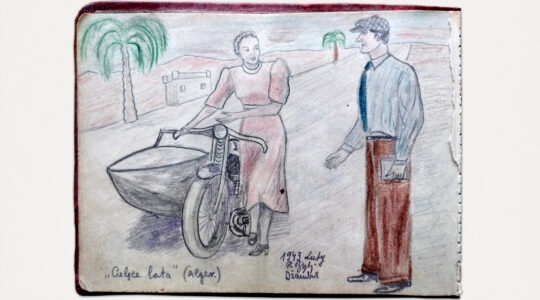Los Angeles — There is so much to read these days about the Israel-Hamas conflict. There are constant reports from Gaza and Israel, with correspondents from around the world reporting on up-to-the-minute casualty figures. My suggestion for those who seek a deeper understanding of the roots of this war is simple: study the Hamas Charter.
Written in 1988, when the group was founded, it’s as shocking to read as it is easy to find. And it might be helpful to then read Israel’s Declaration of Independence, crafted 40 years earlier, for a contrast in goals and aspirations.
Drafted during the ongoing conflict between Arabs and Jews in the region, the Israeli document asserts the rights of Jews to a state in their national homeland. It also calls for freedom for all of its citizens, and extends a hand of peace to all neighboring states while pledging to work toward the advancement of “the entire Middle East.”
The Hamas Charter has a different vision. Its preamble states: “Israel will exist and will continue to exist until Islam will obliterate it, just as it obliterated others before it.”
In then lays out in 32 Articles the group’s purpose: to destroy the Jewish state; kill Jews, whom it compares to Nazis and holds responsible for centuries of wars and catastrophes around the world; and establish an Islamic state. The Charter also asserts that the struggle between Jews and Islam can only be resolved through jihad and martyrdom.
A key difference between 1988 and today is that Hamas is no longer just a terror group; it is the ruling government of Gaza.
Is it the role of journalists today to point out documents that go back decades? Most of the reporting now describes the current conflict as the latest chapter in an old and ongoing story of two combatants caught up in a struggle they cannot avoid. Israel, having failed to make peace with the “reasonable” Palestinians (i.e. the Palestinian Authority), is facing the frustrated aggression of Hamas rockets and responding with military force rather than diplomatic creativity. And Hamas, trapped in a spiral of economic, political and societal hopelessness in Gaza, is using the only means at its disposal to act out and be heard on the world stage — through rocket attacks and efforts to penetrate Israel through the tunnels it has built.
Few, if any, report that Israel evacuated all of its citizens and military presence voluntarily from Gaza in 2005. The hope was that those in charge of Gaza would focus on building a safe and productive place for its citizens. But the result was for Hamas to use its proximity to Israel as a launching pad for assaults on the Jewish communities over the border. Israel’s mistake was in allowing those attacks to take place and continue without a forceful response from the outset.
Israeli political and military leaders know all too well that while the IDF intended a quick confrontation with the Palestine Liberation Organization in Lebanon in 1982, it took 18 years to get out of that lethal quicksand. The same thing, or worse, could happen in Gaza, where close combat already has claimed the lives of Israeli soldiers.
Mainstream media should be putting this conflict in context, explaining that while Israel seeks to defend its citizens against regular rocket attacks from Hamas, that terror group (as designated by the U.S. and Western nations) is committed in its core to wiping out Israel and Jews. What, then, is there for Israel to negotiate other than the details of its suicide?
The foreign news veterans who live in and cover the Mideast should know full well the history and the facts, but they strive mightily to present parallel stories of frustration, pain and revenge in the name of good reporting. In fact, though, “objective journalism” can also mean “lazy journalism.” It translates into letting each side in a conflict have its say, and leaving it at that, rather than digging deeper and offering the reader an understanding of the issue based on one’s knowledge of the reality and context.
Support the New York Jewish Week
Our nonprofit newsroom depends on readers like you. Make a donation now to support independent Jewish journalism in New York.
That takes courage, separating from the journalists’ pack and opening oneself to criticism of being “unfair.” What is truly unfair, however, is to maintain the fiction, in this case, that the IDF and Hamas operate on some kind of equal moral footing when one side uses Iron Dome rockets to protect its citizens and the other uses citizens as human shields to protect its rockets. And when Israel mourns the deaths of innocent Gazans in harm’s way and Hamas deliberately places them there.
To equate the two sides is more than a dereliction of one’s journalistic duties. It is an obscenity that must be exposed and condemned, starting with the Hamas Charter.
Gary Rosenblatt has been the editor and publisher of The Jewish Week for 20 years and has written more than 1,000 "Between The Lines" columns since 1993. Now a collection of 80 of those columns, ranging from Mideast analysis to childhood remembrances as "the Jewish rabbi's son" in Annapolis, Md., is available. Click here for details.
The New York Jewish Week brings you the stories behind the headlines, keeping you connected to Jewish life in New York. Help sustain the reporting you trust by donating today.





